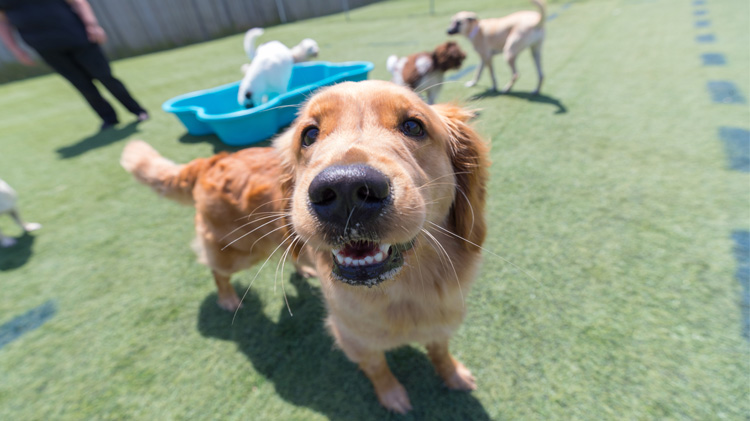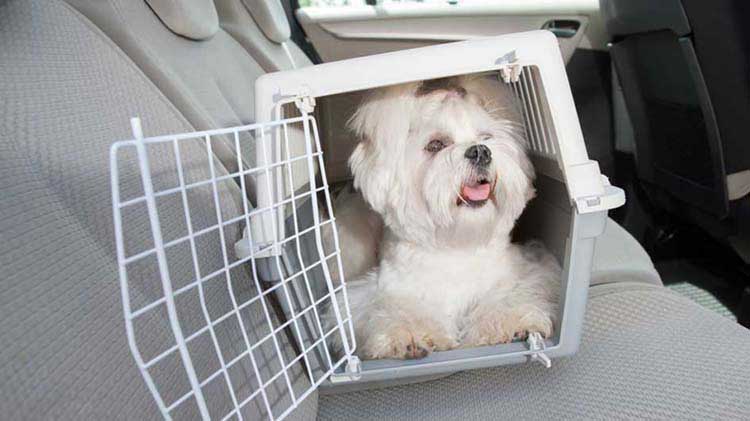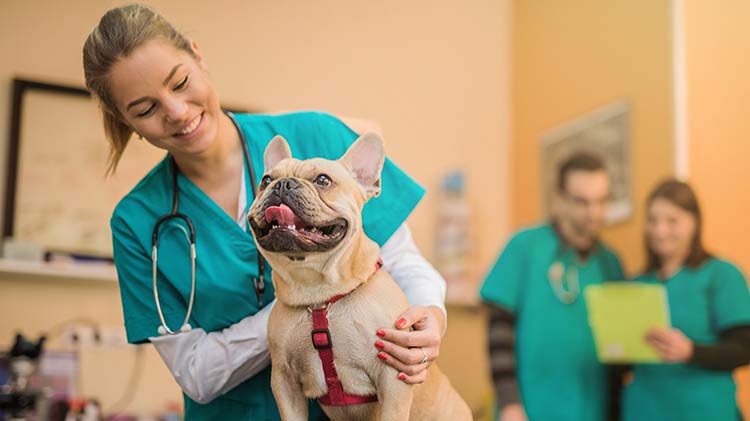Summer pet safety tips
Keep these hot weather tips for pets in mind.
From longer walks to more outdoor adventures, warmer weather provides tons of opportunities for you to bond with your best friend — but summer also introduces some pet hazards to avoid. Take a look at our top five pet heat safety tips to help keep your dog or cat safe when temperatures rise.
Don't leave your dog alone in the car
Leaving your dog alone in the car, even for a few minutes, can cause heat stroke. According to The American Veterinary Medical Association, the temperature inside your car can climb by almost 20 degrees Fahrenheit in 10 minutes, quickly reaching dangerous levels. This is true even on a mild, cloudy day or with the windows cracked.
Plus, many states have made it illegal to leave dogs unattended in cars, and some states allow bystanders and law enforcement to break into cars to rescue pets. (Here's a quick guide from the Humane Society of the United States that shares what to do if you see a pet unattended in a car.)
Instead of leaving your pet alone in the car, you can:
- Leave your pet at home.
- Ask another adult to go with you. They can stay in the car with your pet and run the air conditioning.
- Plan ahead to make pet-friendly pit stops, which is especially important if you're taking a road trip. (Some stores allow you to bring dogs inside.)
- Pick up what you need using curbside pickup, or call and ask for your order to be brought out to your car.
Get a pet insurance quote
Take care of bow-wows and meows.
Avoid dog walks on hot asphalt
How do you know if the asphalt is too hot for your dog? Here's a quick test: Touch the pavement for a few seconds — if it's too hot for you, it's too hot for your pet's paws.
How to protect your pet's paws from hot pavement:
- Walk dogs in the morning or evening when the pavement is cooler.
- If your dog loves to hike with you, pick dirt trails with lots of shade.
- Consider protective summer booties for your dog.
Know the signs of overheating and heat stroke
Trupanion, a leader of medical insurance for cats and dogs, sees heat stroke claims quadruple in the summer months. Note that Brachycephalic (flat-faced) breeds, including bulldogs and Persian cats, are especially prone to heat stroke.
Pets don’t sweat like we do. Dogs mainly cool themselves off by panting, while cats primarily sweat through their paws. Watch for these early warning signs that your pet is overheating:
- Acting sluggish, lethargic or confused
- Changes in the color of their gums and tongue
- Panting hard
While we hope it never happens to your pet, recognizing early signs of heat stroke — and getting veterinary help as quickly as possible — may help save your pet's life. Heat stroke is very serious and can lead to organ failure and even death. Watch for:
- Weakness
- Ataxia
- Increased heart rate
- Excessive drooling
- Excessive panting
But what can you do to help keep your pet cool in the first place? Many hot weather tips for humans also apply to pets, including:
- Prevent dehydration by providing plenty of access to clean water both inside and outside. Collapsible water bowls are a great option for hydration on the go.
- Stay inside or in the shade.
- If you live in an area with extreme humidity, consider a dehumidifier.
- If your pet can swim, a cold-water plunge can be a fun way to cool off. Just be sure to supervise your pet around a pool or large body of water.
- Get a kiddie pool for your pet to splash around in (no swimming skills needed!).
- A summer haircut might help you stay cool, but it won’t have the same effect on your pet. Cutting or shaving your pet’s natural fur can interfere with their ability to stay cool.
- Consider putting sunscreen on your dog, especially those with light skin, white fur or short hair.
Watch for dangerous plants and pests
Many pets have a knack for nibbling on things they shouldn't, so extra vigilance while you're outside could save your pet's life.
Take a moment to acquaint yourself with outdoor plants that are toxic for dogs, including the foxtail and Sago palm. If you have any of these plants in your yard, consider putting put a protective barrier around them or removing them.
More time spent outdoors means that flea and tick prevention is especially important. Ticks and fleas, for example, are most active during the summer months. After any hike or outdoor excursion, check your pet for any unwanted pests.
And, of course, keep your cat or dog on a leash when you're outside.
Pets and fireworks generally don’t mix
If your dog or cat isn't a fan of fireworks, you're not alone. Trupanion put together tips to help keep your pet safe and secure during fireworks — give them a try and see how they work for your furry friend.
- Try exercising them beforehand to help them relax.
- Keep them at home and indoors.
- Make sure windows and doors are closed and secure.
- Consider a safe space or crate.
- Turn on a fan or the TV to help create white noise.
- Make certain that your pets have I.D. tags with up-to-date information.
Bonus tip: Protect your dog or cat this summer and beyond
A great way to help protect your pet, no matter the season: Industry-leading coverage with Trupanion, medical insurance for dogs and cats. Trupanion currently protects over 500,000 pets — and would love to protect yours, too. Get a free, no-obligation quote online, or talk to your State Farm® agent.
Terms and conditions do apply. We love informed decisions. See the Trupanion policy for full coverage details.





